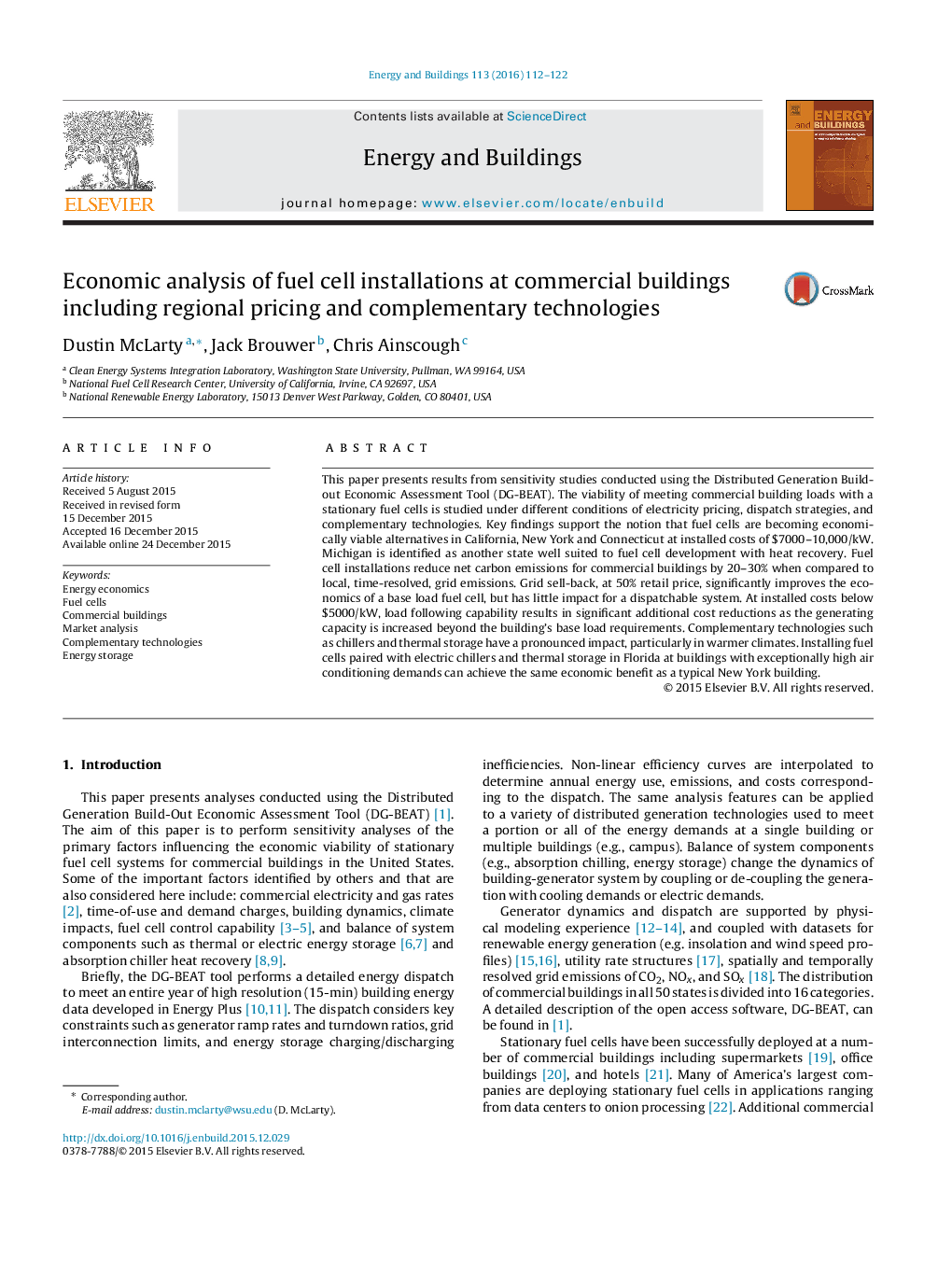| Article ID | Journal | Published Year | Pages | File Type |
|---|---|---|---|---|
| 262157 | Energy and Buildings | 2016 | 11 Pages |
•A novel software tool for design and dispatch of DG systems, DG-BEAT, is utilized.•Provides insights into regional differences in commercial building energy market.•Quantifies benefit of marginal load-following at installed costs below $5000/kW.•Quantifies impact and benefit of thermal energy storage in warm climates.
This paper presents results from sensitivity studies conducted using the Distributed Generation Build-out Economic Assessment Tool (DG-BEAT). The viability of meeting commercial building loads with a stationary fuel cells is studied under different conditions of electricity pricing, dispatch strategies, and complementary technologies. Key findings support the notion that fuel cells are becoming economically viable alternatives in California, New York and Connecticut at installed costs of $7000–10,000/kW. Michigan is identified as another state well suited to fuel cell development with heat recovery. Fuel cell installations reduce net carbon emissions for commercial buildings by 20–30% when compared to local, time-resolved, grid emissions. Grid sell-back, at 50% retail price, significantly improves the economics of a base load fuel cell, but has little impact for a dispatchable system. At installed costs below $5000/kW, load following capability results in significant additional cost reductions as the generating capacity is increased beyond the building's base load requirements. Complementary technologies such as chillers and thermal storage have a pronounced impact, particularly in warmer climates. Installing fuel cells paired with electric chillers and thermal storage in Florida at buildings with exceptionally high air conditioning demands can achieve the same economic benefit as a typical New York building.
